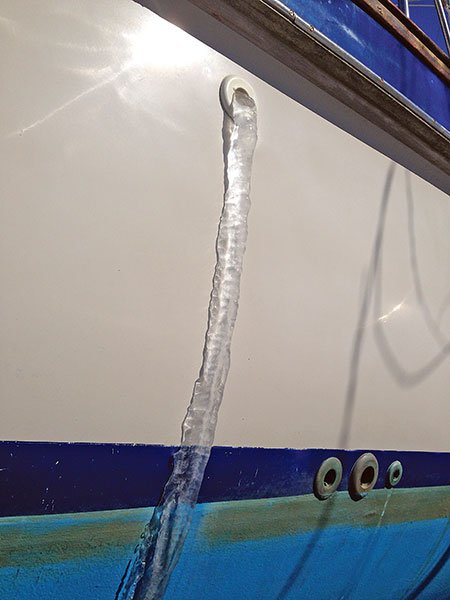
Custom-made winter covers, typically canvas or synthetic, are a terrific benefit to your boat's gel coat and general well-being.
A good well-supported cover offers many benefits. It keeps leaves and debris from clogging scuppers and causing the boat to flood when a downpour comes or the snow melts. It keeps snow from accumulating in the cockpit and forcing the boat underwater in its slip or damaging thru-hull fittings on boats on the hard when melt-water freezes.
It protects the deck from pooling water that can lead to de-lamination and freeze damage. And it protects gel coat on the deck and coach roof from the elements, extending its life.
The best covers are custom made from canvas. With any custom cover, a frame, either wood or aluminum, should be used to circulate air and prevent pooling on the cover. Vents should also be built into the cover to encourage ventilation and reduce mildew. Never secure the boat's winter cover to the jack stands or support blocks because the stands can be yanked out during a strong blow.
Though shrink-wrapping is very effective at keeping rain and snow out, it will also trap moisture inside and create horrendous mildew problems if vents aren't used along the entire length of the cover. Another problem: Cabins and decks painted with two-part polyurethane paints may peel or bubble where the shrink-wrap touches it.
Inserting a series of foam pads between the hull and cover allows condensation to escape. Finally, don't shrink-wrap the boat yourself.
All it takes is a moment of inattention to ignite the shrink-wrap, and if the fire occurs inside the cover, it might not even be visible right away.
This is one job best left to the pros.